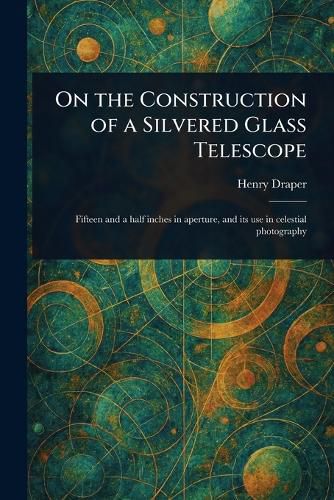Readings Newsletter
Become a Readings Member to make your shopping experience even easier.
Sign in or sign up for free!
You’re not far away from qualifying for FREE standard shipping within Australia
You’ve qualified for FREE standard shipping within Australia
The cart is loading…






This title is printed to order. This book may have been self-published. If so, we cannot guarantee the quality of the content. In the main most books will have gone through the editing process however some may not. We therefore suggest that you be aware of this before ordering this book. If in doubt check either the author or publisher’s details as we are unable to accept any returns unless they are faulty. Please contact us if you have any questions.
Explore the history of astronomy and telescope construction with Henry Draper's "On the Construction of a Silvered Glass Telescope: Fifteen and a half inches in aperture and its use in celestial photography." This detailed treatise delves into the intricacies of building a reflecting telescope, specifically focusing on the techniques and considerations involved in creating a silvered glass telescope.
A vital resource for anyone fascinated by the science of optics and its application to space science, Draper's work provides insights into the methods of celestial photography during the era. Uncover the secrets behind constructing a high-powered telescope capable of capturing stunning images of the cosmos.
Whether you are an astronomy enthusiast, a student of physics, or simply curious about the evolution of telescope technology, this book offers a unique and informative journey into the world of telescope construction and the art of revealing the universe through the lens of a reflecting telescope.
This work has been selected by scholars as being culturally important, and is part of the knowledge base of civilization as we know it.
This work is in the public domain in the United States of America, and possibly other nations. Within the United States, you may freely copy and distribute this work, as no entity (individual or corporate) has a copyright on the body of the work.
Scholars believe, and we concur, that this work is important enough to be preserved, reproduced, and made generally available to the public. We appreciate your support of the preservation process, and thank you for being an important part of keeping this knowledge alive and relevant.
$9.00 standard shipping within Australia
FREE standard shipping within Australia for orders over $100.00
Express & International shipping calculated at checkout
This title is printed to order. This book may have been self-published. If so, we cannot guarantee the quality of the content. In the main most books will have gone through the editing process however some may not. We therefore suggest that you be aware of this before ordering this book. If in doubt check either the author or publisher’s details as we are unable to accept any returns unless they are faulty. Please contact us if you have any questions.
Explore the history of astronomy and telescope construction with Henry Draper's "On the Construction of a Silvered Glass Telescope: Fifteen and a half inches in aperture and its use in celestial photography." This detailed treatise delves into the intricacies of building a reflecting telescope, specifically focusing on the techniques and considerations involved in creating a silvered glass telescope.
A vital resource for anyone fascinated by the science of optics and its application to space science, Draper's work provides insights into the methods of celestial photography during the era. Uncover the secrets behind constructing a high-powered telescope capable of capturing stunning images of the cosmos.
Whether you are an astronomy enthusiast, a student of physics, or simply curious about the evolution of telescope technology, this book offers a unique and informative journey into the world of telescope construction and the art of revealing the universe through the lens of a reflecting telescope.
This work has been selected by scholars as being culturally important, and is part of the knowledge base of civilization as we know it.
This work is in the public domain in the United States of America, and possibly other nations. Within the United States, you may freely copy and distribute this work, as no entity (individual or corporate) has a copyright on the body of the work.
Scholars believe, and we concur, that this work is important enough to be preserved, reproduced, and made generally available to the public. We appreciate your support of the preservation process, and thank you for being an important part of keeping this knowledge alive and relevant.